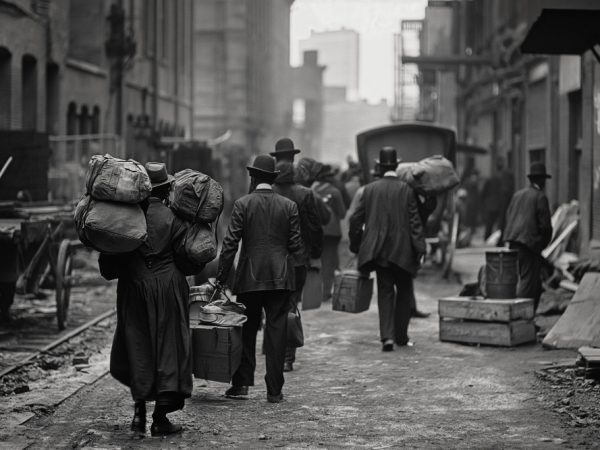The 1920s, famously known as the “Roaring Twenties,” marked a period of unprecedented economic growth, cultural change, and societal transformation in the United States. At the heart of this transformative era was a booming culture of consumerism that reshaped the way Americans lived, worked, and played. But what exactly fueled the consumerism of the 1920s, and what were the key factors driving this economic phenomenon? Let’s delve into the vibrant world of the Roaring Twenties and uncover the forces that propelled the era’s insatiable appetite for consumption.
A Nation Reborn
Following the devastation of World War I, the United States emerged as a global economic powerhouse, fueled by a combination of industrial innovation, technological advancements, and a surge in productivity. The end of the war brought about a period of unparalleled prosperity, as returning soldiers reentered the workforce, industries ramped up production, and consumer demand soared. With the war’s end came a newfound sense of optimism and confidence in the future, setting the stage for an era of prosperity and abundance.
The Age of Innovation
The 1920s witnessed a wave of technological advancements that revolutionized everyday life and transformed the way people lived and worked. Innovations such as the automobile, radio, telephone, and household appliances became increasingly accessible to the average consumer, ushering in an era of convenience and modernity. The widespread adoption of these technologies not only improved the quality of life but also fueled consumer demand for new and innovative products, driving economic growth and prosperity.
Shaping Consumer Culture
One of the defining features of 1920s consumerism was the rise of advertising and mass media, which played a pivotal role in shaping consumer culture and driving demand for new products and services. With the advent of radio, newspapers, magazines, and billboards, advertisers had unprecedented access to a mass audience, allowing them to promote products and brands to consumers on a national scale. Clever marketing campaigns and persuasive messaging appealed to consumers’ desires for status, convenience, and modernity, driving sales and consumption to new heights.
The Rise of the Modern Consumer
The 1920s witnessed a significant shift in demographics as millions of Americans migrated from rural areas to urban centers in search of economic opportunities and a better quality of life. This mass migration fueled the growth of cities and suburbs, creating new markets for consumer goods and services. Urbanization brought about changes in lifestyle and social norms, as people embraced the ideals of modernity, leisure, and consumption. The rise of consumer culture became synonymous with progress and prosperity, as Americans embraced the trappings of a modern, urban lifestyle.
Making Consumption Accessible
Another key factor driving consumerism in the 1920s was the availability of easy credit and installment plans, which made it easier for consumers to finance purchases and spread out payments over time. The widespread adoption of installment buying allowed consumers to afford big-ticket items such as automobiles, appliances, and furniture, even if they didn’t have the cash upfront. This democratization of credit fueled consumer spending and fueled demand for goods and services, contributing to the economic boom of the Roaring Twenties.
Embracing the “New Woman” and Modernity
The 1920s witnessed a cultural revolution that challenged traditional norms and values, particularly regarding gender roles and social expectations. The “New Woman” emerged as a symbol of independence, freedom, and empowerment, as women increasingly entered the workforce, participated in social and political movements, and asserted their autonomy. This shift in attitudes towards gender and sexuality contributed to the rise of consumer culture, as women became influential consumers in their own right, driving demand for fashion, beauty products, and other consumer goods.
The Legacy of 1920s Consumerism
In conclusion, the consumerism of the 1920s was fueled by a combination of post-war prosperity, technological advancements, advertising and mass media, urbanization, easy credit, and changing cultural norms. This convergence of factors created an environment ripe for consumption, as Americans embraced the ideals of modernity, convenience, and progress. The legacy of 1920s consumerism continues to shape our modern economy and society, underscoring the enduring influence of this transformative era in American history.
